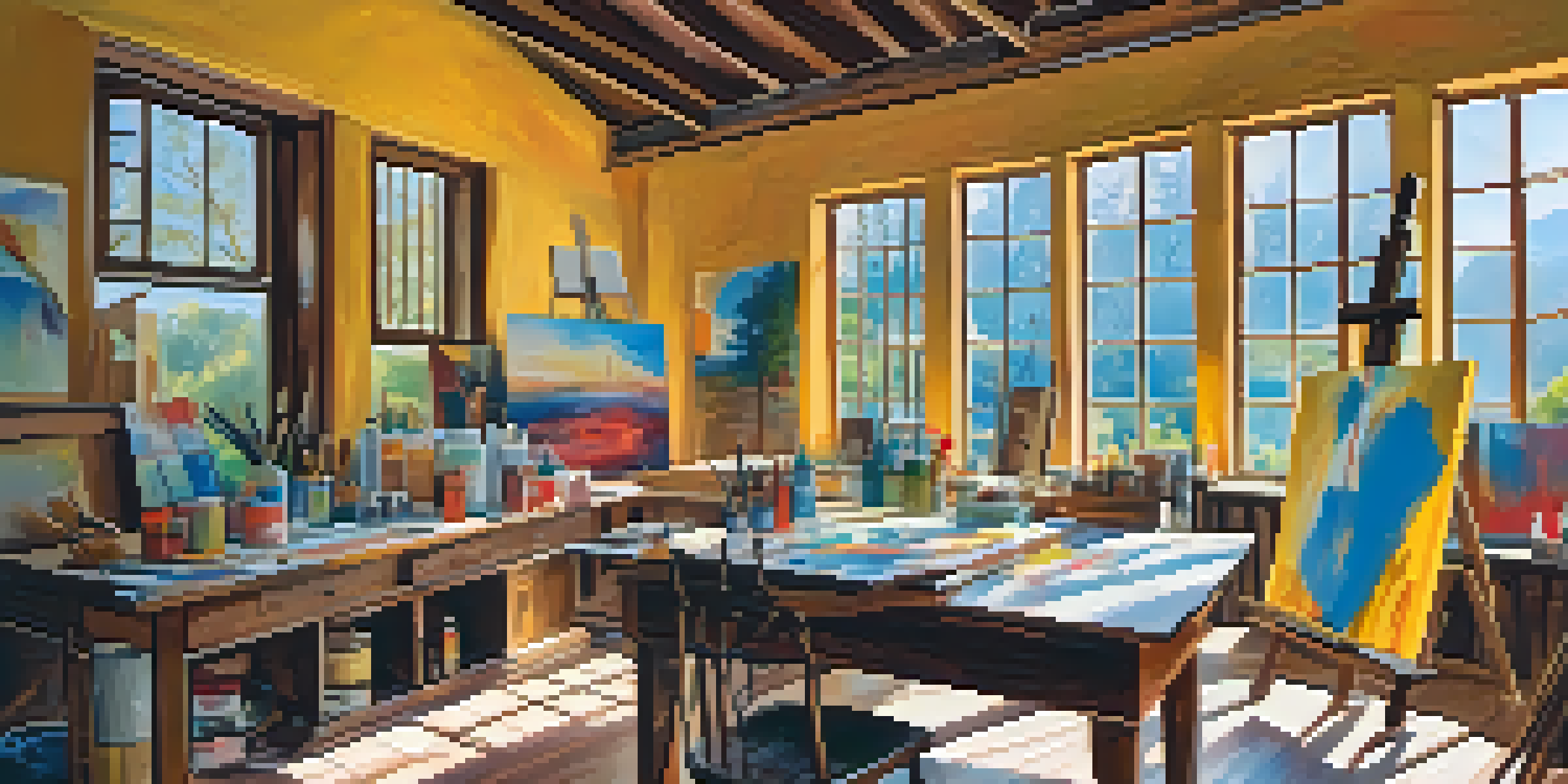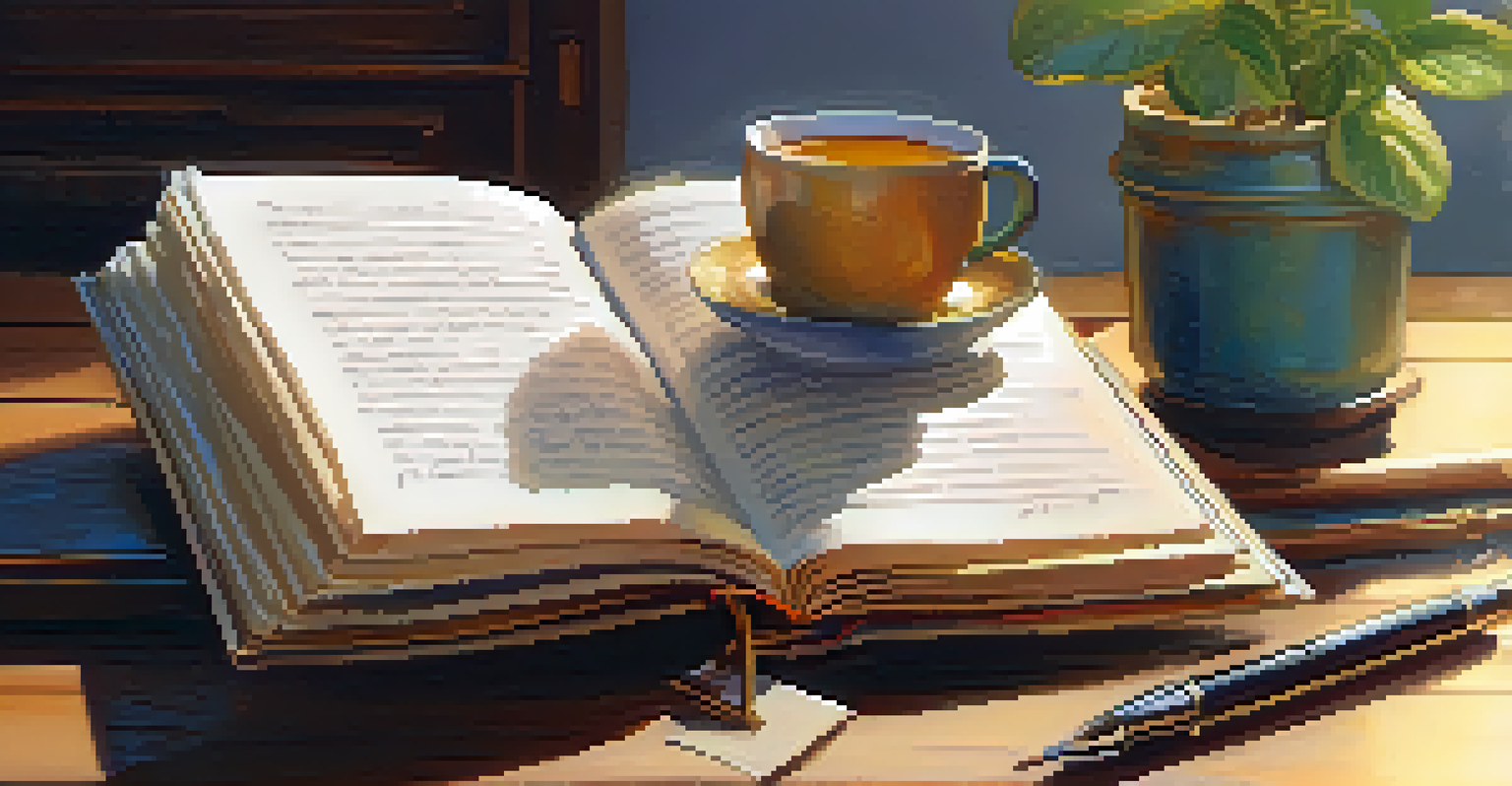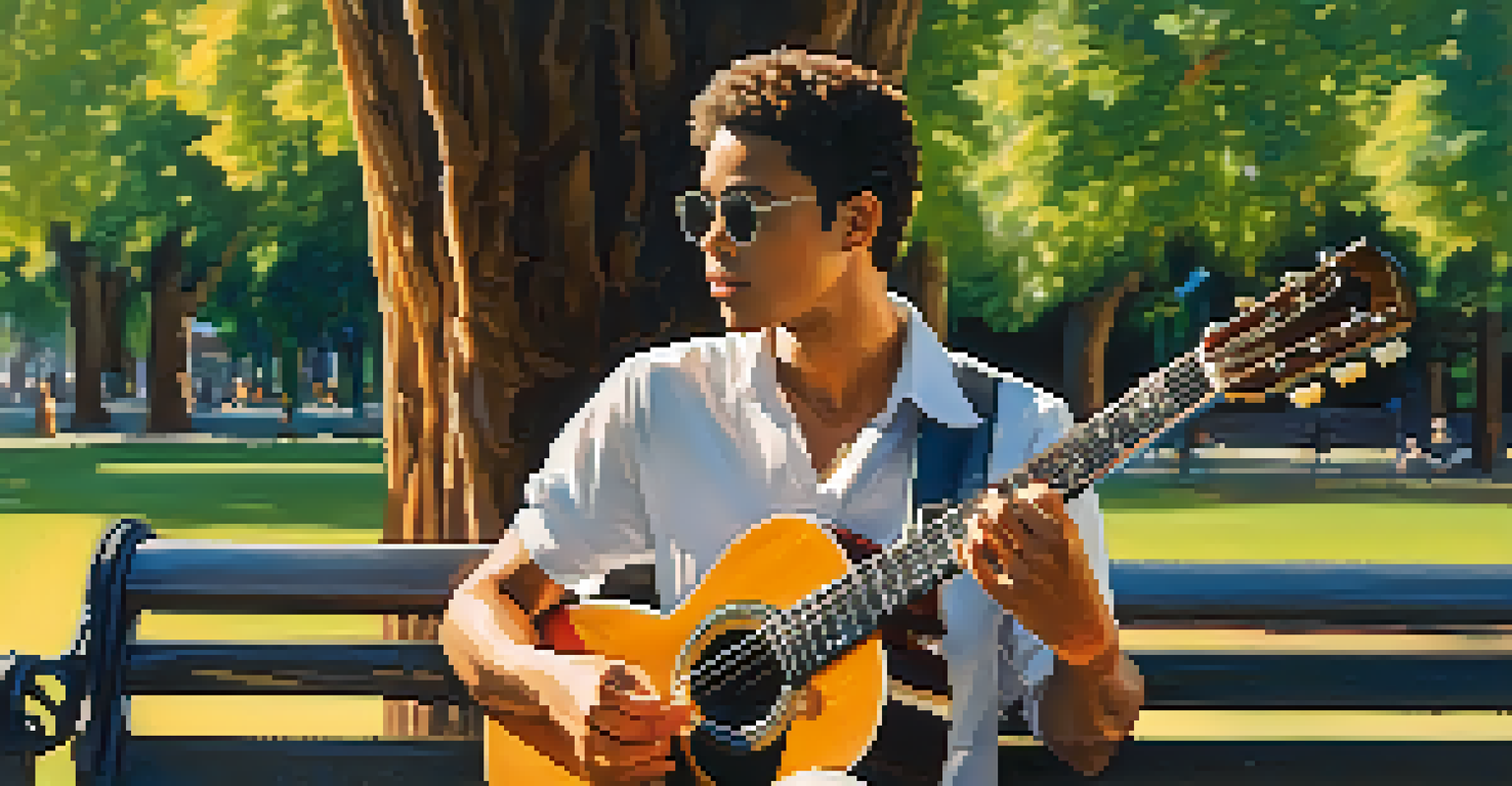Artistic Expression as a Tool for Subconscious Exploration

Understanding Artistic Expression and Its Impact
Artistic expression encompasses a variety of forms, such as painting, music, and writing. These creative outlets allow individuals to communicate feelings and thoughts that may be difficult to articulate verbally. By tapping into the creative process, one can reveal layers of their subconscious that often remain hidden in everyday life.
Art enables us to find ourselves and lose ourselves at the same time.
When we engage in artistic activities, we access a part of our brain that allows for free thought and exploration. This process can be remarkably liberating, as it enables us to convey emotions and experiences without the constraints of societal expectations. Essentially, artistic expression becomes a bridge between our conscious and subconscious minds.
Moreover, this exploration can lead to greater self-awareness. As artists create, they often reflect on their feelings, leading to insights about their motivations, fears, and desires. This journey into self-discovery can be both therapeutic and enlightening.
The Role of Creativity in Self-Discovery
Creativity plays a pivotal role in self-discovery, acting as a mirror that reflects our innermost thoughts. Through various artistic mediums, individuals can explore their identities and confront their emotions. For instance, a painter may express feelings of joy or sadness through their color choices and brush strokes, revealing deeper layers of their psyche.

Engaging in creative activities encourages a state of flow, where individuals lose track of time and become fully immersed in the process. This state can foster a sense of freedom, allowing thoughts and feelings to emerge without judgment. As a result, artists often find clarity about their experiences and emotions.
Art as a Path to Self-Discovery
Engaging in artistic expression allows individuals to explore their emotions and gain greater self-awareness.
In essence, creativity becomes a powerful tool for self-exploration. It provides a safe space to confront unresolved issues and articulate complex feelings, leading to a richer understanding of oneself.
Art Therapy: A Structured Approach to Healing
Art therapy is a structured therapeutic approach that utilizes artistic expression as a means of healing. Trained therapists guide individuals through creative processes to help them explore and express their emotions. This approach can be particularly beneficial for those who struggle with verbal communication.
Creativity takes courage.
Through art therapy, participants create works that reflect their inner worlds, providing insights into their thoughts and feelings. For example, a person dealing with trauma may create abstract art that symbolizes their pain, allowing them to confront and process their experiences in a non-threatening way. This can pave the way for emotional healing.
Ultimately, art therapy exemplifies how artistic expression can be harnessed as a tool for subconscious exploration. It not only facilitates self-discovery but also promotes emotional resilience and well-being.
Symbolism in Art: Unlocking Hidden Meanings
Symbolism in art serves as a gateway to understanding deeper emotions and thoughts. Artists often use symbols—ranging from colors to shapes—to convey complex feelings. For instance, the color blue might represent sadness, while a rising sun might symbolize hope.
By analyzing the symbols present in a piece of art, both the artist and the viewer can gain insights into the artist's subconscious mind. This process transforms a simple piece of art into a narrative that reveals the artist's innermost thoughts and feelings. It encourages a dialogue about the meaning behind the work.
Art Therapy for Emotional Healing
Art therapy provides a structured approach for individuals to express and process their feelings through creative outlets.
This exploration of symbolism not only enriches our understanding of art but also enhances our ability to interpret our emotions. Engaging with symbols allows us to connect with our subconscious in a meaningful way, leading to a better understanding of ourselves.
Journaling: A Personal Form of Artistic Expression
Journaling is a powerful form of artistic expression that many people overlook. By putting pen to paper, individuals can explore their thoughts and feelings in a raw, unfiltered manner. This practice often reveals hidden emotions that may not surface in everyday conversations.
The act of journaling allows for reflection and introspection, creating a safe space for individuals to express their innermost thoughts. Whether through poetry, prose, or stream-of-consciousness writing, journaling can serve as a therapeutic outlet for exploring one's psyche. It’s a chance to confront fears, desires, and unresolved issues.
Furthermore, journaling can enhance creativity by encouraging a flow of ideas without the constraints of judgment. This freedom fosters a deeper connection with oneself, making it a valuable tool for subconscious exploration.
Music as a Medium for Emotional Expression
Music holds a unique power to evoke emotions and connect with our subconscious minds. It can transport us back to specific memories or feelings, allowing us to explore our inner landscapes. When we listen to or create music, we often tap into emotions that might have been buried or forgotten.
For many, songwriting becomes an intimate process of self-exploration. The lyrics often reflect personal experiences, fears, and aspirations, serving as a narrative of one’s life journey. This creative outlet can be therapeutic, helping individuals process complex emotions and experiences through melodies and rhythms.
Music and Journaling Unlock Emotions
Both music and journaling serve as powerful tools for exploring and articulating complex emotions and thoughts.
Ultimately, music acts as a universal language, bridging the gap between feelings and expression. It provides a means to explore and articulate our subconscious thoughts in ways that words alone may fail to capture.
Finding Your Artistic Voice: A Journey of Exploration
Finding your artistic voice is an ongoing journey that requires exploration and experimentation. Each person's voice is unique, shaped by their experiences, emotions, and perspectives. Embracing this individuality can lead to profound self-discovery and personal growth.
As you explore different forms of artistic expression, you may encounter various styles, techniques, and mediums. This experimentation allows you to discover what resonates with you on a deeper level. Over time, you’ll develop a style that reflects your subconscious thoughts and feelings, creating a genuine connection to your art.

The journey to finding your artistic voice is not just about creating art; it's about understanding yourself better. By embracing your creativity, you unlock a pathway to explore your subconscious, leading to a richer and more fulfilling life experience.